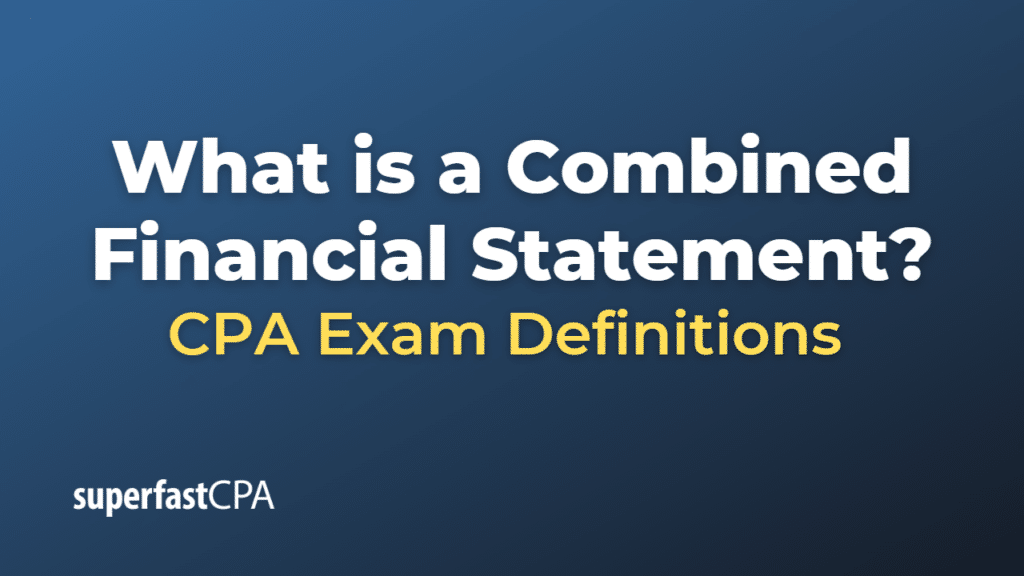Combined Financial Statement
A combined financial statement is a financial report that consolidates the financial information of two or more related entities under common control or management. The purpose of a combined financial statement is to present a comprehensive view of the financial position, performance, and cash flows of the related entities as if they were a single economic unit. This type of financial statement is particularly useful for parent companies, investors, and stakeholders to assess the overall financial health and performance of a group of entities.
Combined financial statements include the major financial statements, such as the balance sheet, income statement, and cash flow statement, along with accompanying notes and disclosures. The process of preparing a combined financial statement involves aggregating the individual financial statements of each entity and making certain adjustments to eliminate intercompany transactions, balances, and unrealized gains or losses.
It’s important to note that combined financial statements are different from consolidated financial statements. While both present the financial information of multiple entities as a single economic unit, consolidated financial statements are used for parent companies and their subsidiaries, where the parent company holds a controlling interest in the subsidiary. In contrast, combined financial statements are typically used for entities under common control or management but without a direct parent-subsidiary relationship.
Combined financial statements can be valuable for various reasons, such as evaluating the overall performance of a group of related companies, making investment decisions, or obtaining financing.
Example of a Combined Financial Statement
Let’s consider a hypothetical example to illustrate the concept of combined financial statements.
Imagine there are three companies: Company A, Company B, and Company C. All three companies operate in the same industry and are owned and controlled by the same individual or group of investors. Although these companies are separate legal entities, they share common management and are strategically aligned.
To assess the overall performance and financial health of the entire group, the owners and management decide to prepare combined financial statements. This process involves the following steps:
- Obtain the individual financial statements of Company A, Company B, and Company C.
- Aggregate the financial information from each company’s balance sheet, income statement, and cash flow statement.
- Eliminate any intercompany transactions, balances, and unrealized gains or losses that may have occurred between the companies. This is important to avoid double-counting and to present an accurate picture of the group’s financial position.
- Prepare the combined balance sheet, income statement, and cash flow statement, along with accompanying notes and disclosures.
By preparing combined financial statements, the owners and management can now analyze the financial performance and position of the entire group as a single economic unit. This provides valuable insights into the group’s overall profitability, liquidity, and solvency, which can be useful for making strategic decisions, evaluating investment opportunities, or obtaining financing.













